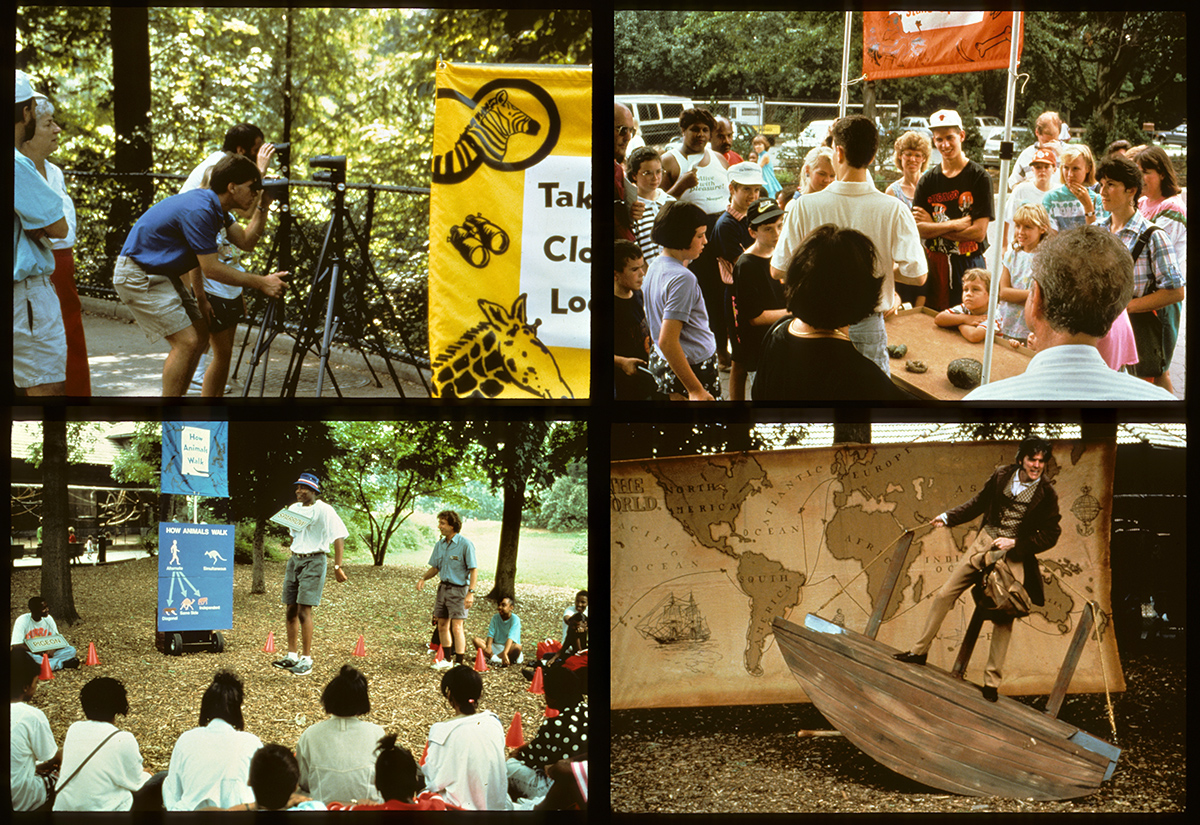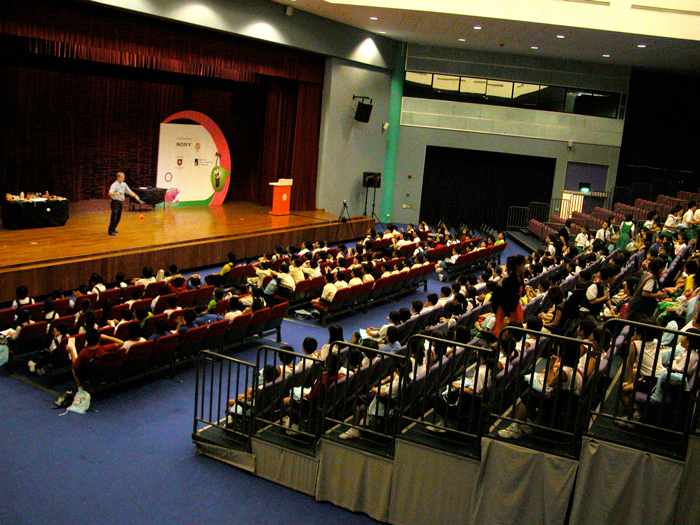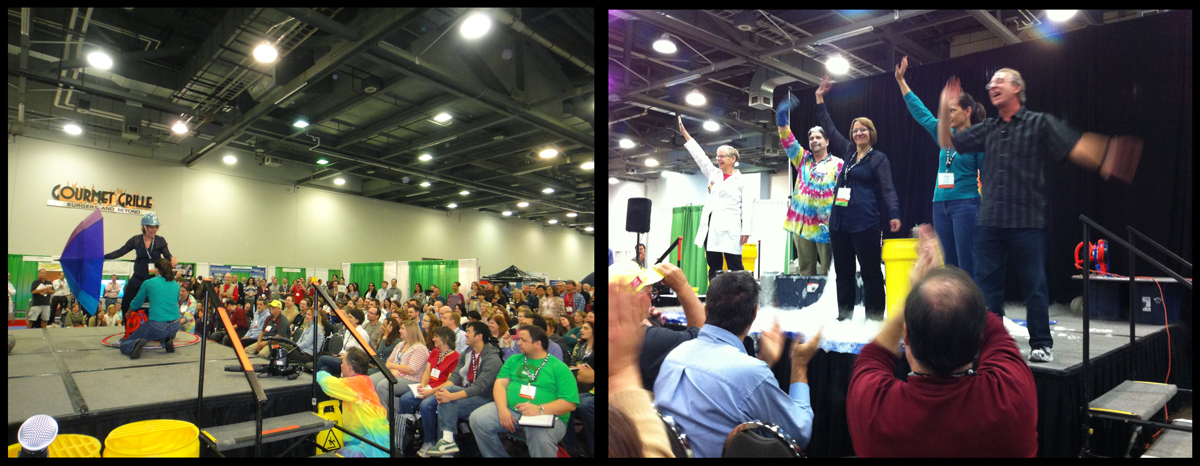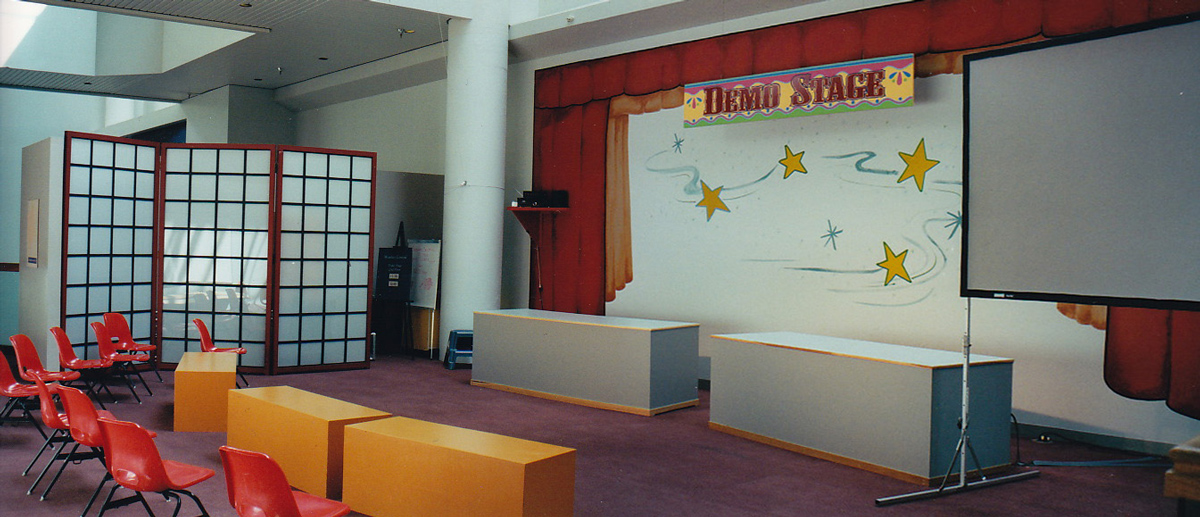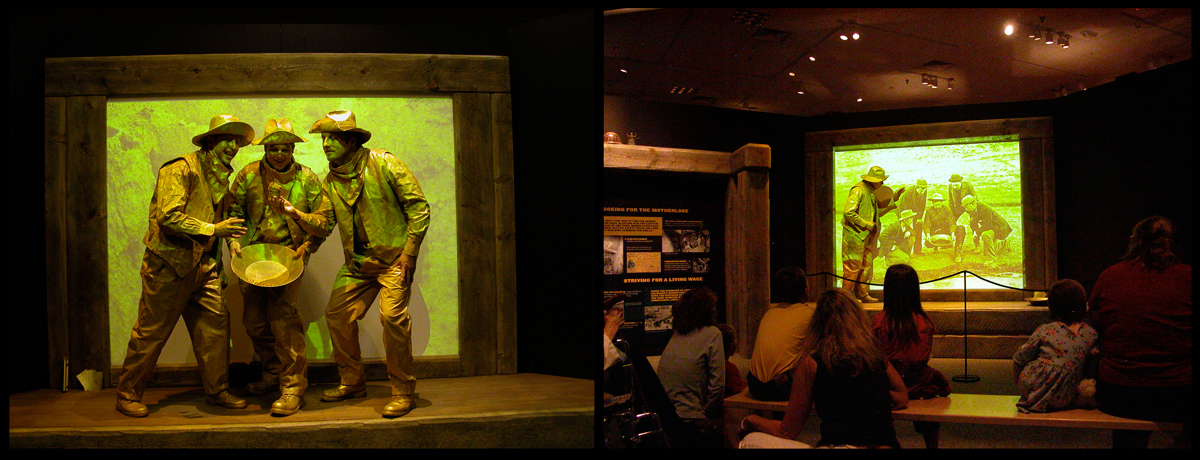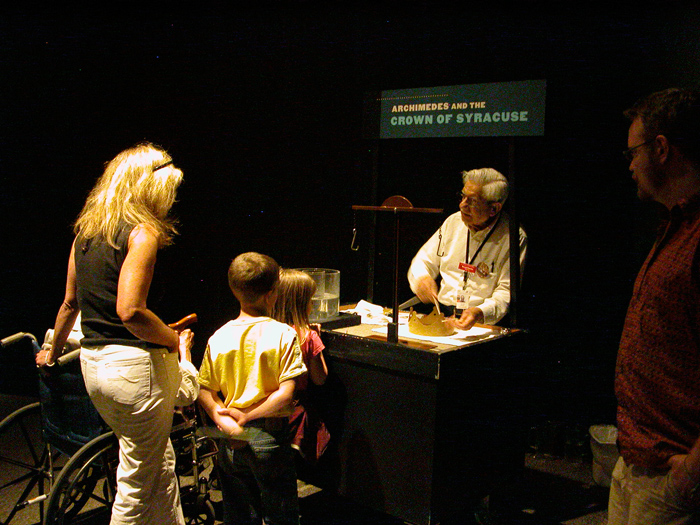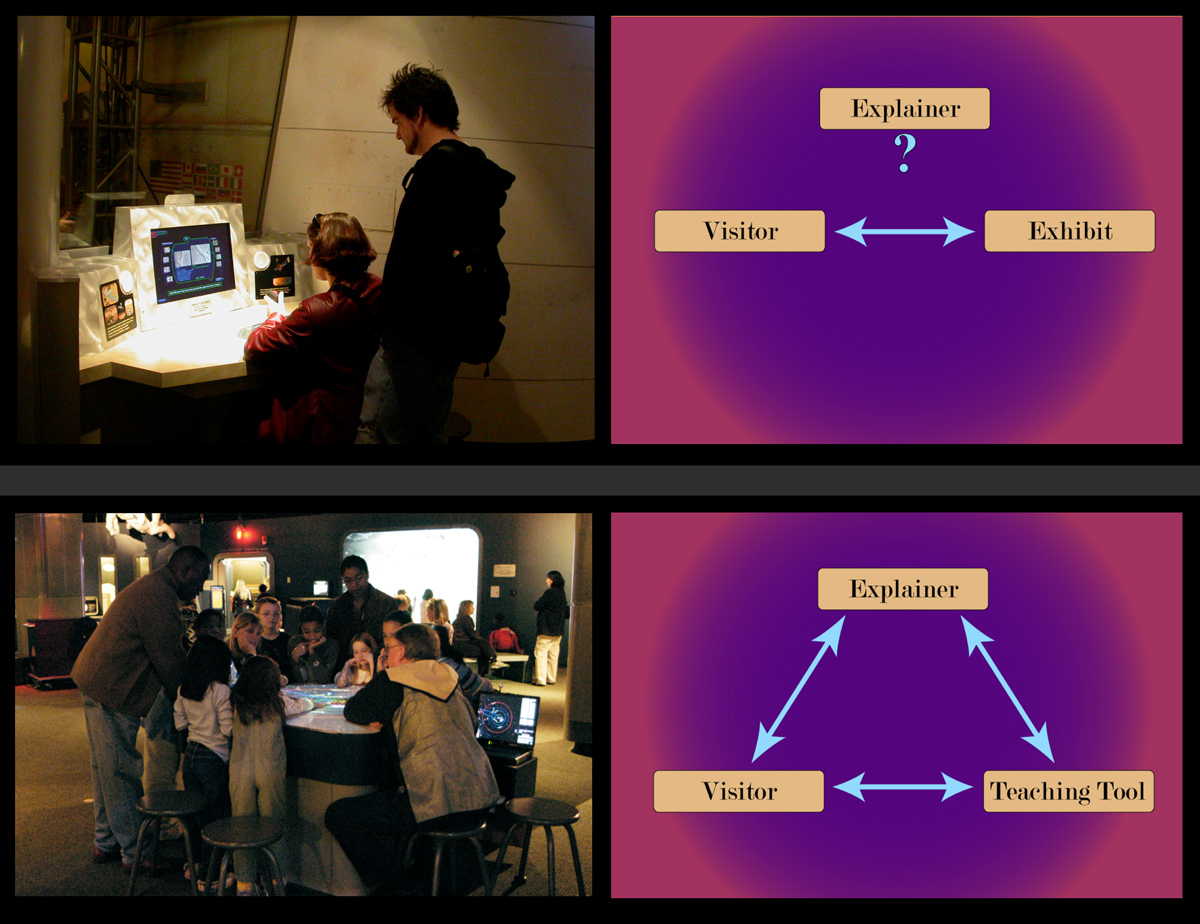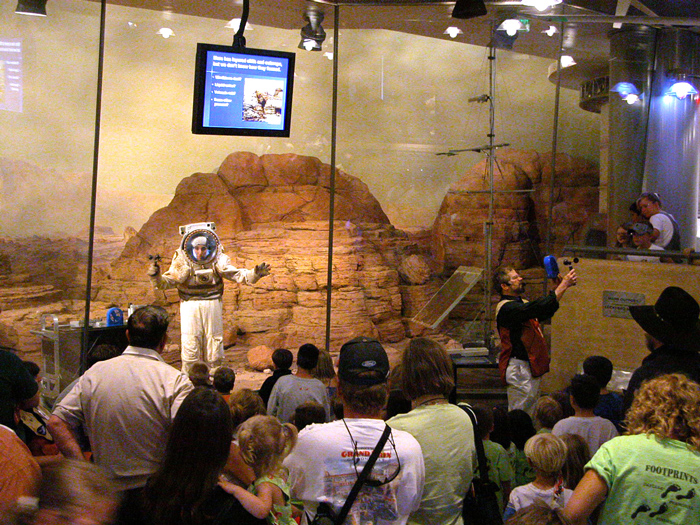This short history of my museum career is really the story of my evolving approach to museum education. It is a chance for you to understand the way I think.
A short history of my museum career
I graduated from Columbia University with a degree in engineering math and physics. Then graduate school at the University of Colorado in math and math education.
Since that time, I’ve always had two parallel careers – one in education and one in performing. My education career started as a Jr. H.S. math teacher in 1976. My strength was that I actually UNDERSTOOD the math I was teaching, and I had the knack of being able to explain difficult concepts. My performing career started even earlier than that – as a professional magician and street performer in 1973.
In 1981, I “retired” from teaching and became a full-time dinner theater performer near Washington, DC. Fun as it was, my educational self felt unfulfilled. So, I approached the Maryland Science Center with an idea. A Magical Math Show. Not just a show with “number tricks,” but a show that would introduce people to other types of mathematics, like topology, matrices, probability, networks, and logic. My educational side knew how to explain difficult concepts and make them interesting. My magician side knew how to shape an audience’s perceptions of what they were seeing. This was a very strong combination.
Here are some rare pictures from the original Magical Math Show.
In 1984 I made the choice to leave full-time performing and jump into the museum world at the Capital Children’s Museum / National Learning Center. Designing exhibits for kids is a special challenge. They don’t read signs and just plunge right in. So we needed to design exhibits that would be inherently understandable, and would communicate the “teaching points” through the very actions that the kids intuitively did. As it turns out, this is true for adults as well.
My first foray into creating PROGRAMS for museums came at the Smithsonian Institution with an experimental project, called “Improving Exhibition Interpretation” at the National Zoo and the National Museum of American History. The idea was to experiment with novel ways to communicate with visitors using as many different techniques as we could imagine (within budget, of course.) These included a quiz game about elephants, a one-man play about young Charles Darwin, and binoculars on tripods in front of animal enclosures, staffed by high school kids, to name a few. My favorite was a street theater show called How Animals Walk performed at a busy zoo intersection in front of the monkey house.
The IEI project was where I first formulated many of the principals of good museum programming that I use to this day.
You can read a copy of the original IEI report HERE (7MB).
By now my Magical Math Show had morphed into the Magical Math and Science Show. I have performed variations of this show around the world. From Australia, to India, to Singapore, to Trinidad, to San Francisco and New York, and many places in between.
Around this same time, in the mid-1980s, I started attending Association of Science-Technology Centers (ASTC) conferences and lucked into the job of organizing and hosting the ASTC Live Demo Hour. Every year since, I have put on a program with some of the best science demonstration talent in the world. It is one of the most highly-attended programs at each year’s ASTC conference. Thanks to the Live Demo Hour, I have built a reputation as one of the best science performers in the industry.
You can watch some videos from recent Live Demo Hours at ASTC’s YouTube channel HERE or HERE.
In 1992 I moved back to Boulder, Colorado to work at the Denver Museum of Nature and Science. (Then called the Denver Museum of Natural History.) My job? To “enliven the galleries.” My initial approach was to start a museum performing program. To put this into context, in 1992 only a very few science museums had performing programs. The Science Museum of Minnesota and the Museum of Science in Boston were two pioneers. I like to think I was part of that pioneering movement as well.
It was a chance to break into new territory – something I’ve always enjoyed. It was also an opportunity to share my theatrical knowledge and educational experience with a group of performer/educators just entering this brand new field.
(On this web site I am not representing the Denver Museum of Nature and Science. I speak only for myself. That said, my work at DMNS is part of my résumé.)
Here’s a picture of the original Demo Stage at DMNS. Even then I was integrating multi-media with live performing. But instead of HD video screens we were using carousel slide projectors!
Over the past two decades, working with the very talented and creative staff at DMNS, I have mounted science shows in a myriad of formats. From traditional science-center demos, to science-based art classes, to plays, and street-theater shows. To give you a taste of one of the non-standard approaches I have taken, I once hired gold-painted mimes to perform in front of a large screen in our temporary Gold exhibit. They seemed to become part of the projected pictures. (Not only was I trying to capture the “bling” of gold, I was also trying to reach non-English speakers. One way to do that is to be multi-lingual. The approach that I took was not to use language at all.)
I have experimented with a variety of exhibit-floor “carts.” One of the most interesting was Archimedes and the Crown of Syracuse, which integrated experiments about density with storytelling. The cart became a stage, and the story was as important as the science.
I was the Senior Educator for Space Odyssey, a ground-breaking exhibit which won the ASTC-Roy Shafer Leading Edge Award. Our goal was to create an environment where conversations about space science would take place. To that end, we had to develop new techniques. Typically, the role of a volunteer docent is to support the exhibit. We turned things on it’s head. In Space Odyssey, the goal of the exhibit is to support the volunteers in having conversations with visitors.
One new technique is the idea of “teaching tools.” Very often, when a gallery is filled with self-explanatory exhibits, a volunteer will approach a visitor and ask if they need any help. The answer is usually, “No, I’m OK.” So, in addition to a baseline of stand-alone exhibits, we created a fleet of teaching tools, designed to be used by the volunteers and the visitors together. This makes the volunteer, the visitor, and the teaching tool all integral parts of the total educational experience.
The most innovative teaching tool was putting laptop computers, locked down to rolling carts, at the disposal of the volunteers. Imagine this. You ask the volunteer a question. The volunteer says, “Don’t go ‘way,” and returns 30 seconds later rolling a laptop. The volunteer and visitor explore together. And, here comes the best part. The volunteer then e-mails links for all of the web sites they’ve just looked at directly to the visitor’s home account! It is the ultimate in extending the museum experience and stoking the visitor’s curiosity. We even placed screens throughout Space Odyssey that a volunteer can plug their laptop into so that a larger group of visitors can all see the screen at once.
These screens are the basis of what we call “virtual stages.” A push of a button and a screen appears, lights turn on, and microphones are zoned, to create, how else can I put it, a virtual stage. This has enabled us to bring up-to-the-minute content to the floor of the museum. Things like rocket launches become mini-events.
Even our Mars diorama turns into a stage when educator/performers, in realistic space suits, become astronauts working on the surface of Mars. Is this science fiction? No. It is INSPIRATION to our youngest visitors who will turn this into science fact.
As you can see, I am proud of the ground-breaking work I have accomplished in my career. And, the work is not over. The next phase is to work with you, in your museum, to create amazing experiences for your visitors, grounded in solid science and art.



